Retro Replay Review
Gameplay
Death Camp unfolds as a classic text adventure, inviting players to navigate a harrowing World War II prison camp through written commands and careful observation. Using the STAC engine, the game emphasizes text inputs like “examine fence” or “use knife on lock” to progress, striking a balance between challenge and accessibility. Veterans of interactive fiction will appreciate the intuitive parser, while newcomers will find the game’s help prompts and clear syntax guidelines helpful for getting started.
Across the various compounds and barracks, the player must gather tools, decode clues, and outwit guards to stage an escape. Puzzle design is thoughtful rather than obtuse: each locked door, patrol route, or hidden passage has logical solutions rooted in the environment. The non-linear layout allows multiple approaches to key objectives, encouraging experimentation and replayability.
Pacing is a highlight, with tense stealth sections interspersed between moments of resource management and dialogue with fellow prisoners. Randomized guard patrols and timed events maintain a constant sense of urgency—every decision feels critical. The built-in save system further eases player anxiety, enabling you to retry challenging sequences without severe penalties.
Graphics
Despite being a text-based title, Death Camp surprises with color illustrations accompanying nearly every location. These static images capture the bleakness of the 1944 setting: barbed-wire fences, guard towers under smoky skies, and cramped bunk rooms lined with cots. The art style leans toward gritty realism, reinforcing the narrative’s emotional weight.
Illustrations are integrated seamlessly alongside the text interface, enhancing immersion without detracting from the core gameplay. While the resolution is modest by modern standards, each picture conveys sufficient detail to situate the player in the camp—rusted gates, muddy courtyards, and makeshift prisoner camps all come to life. The juxtaposition of stark prose and vivid visuals creates a memorable atmosphere.
Color palettes are deliberately muted, with browns, grays, and dark greens dominating the scenes. This choice amplifies the oppressive mood, underscoring the sense of despair that looms over the Death Camp. Occasional bursts of red—bloodstains on walls or guard armbands—serve as chilling reminders of the camp’s brutality and raise the tension during gameplay.
Story
Set in 1944, Death Camp casts you as a paratroop major who has endured capture by Japanese forces and a failed escape attempt. Transferred to the ominously named “Death Camp,” your mission is clear: find a way out of this fortified prison before hope—and life—slip away. The premise is simple yet effective, grounding the narrative in historical conflict and personal survival.
The writing effectively conveys the desperation of life behind barbed wire, with vivid descriptions of daily routines—roll calls, forced labor, and meager rations. Interactions with fellow prisoners add layers of depth, as you learn snippets of their backstories and forge uneasy alliances. NPC dialogue is concise yet impactful, humanizing the inmates without bogging down the pacing.
The game’s branching paths hinge on player choices: do you consolidate resources for a daring night escape, or attempt a stealthy breakout amid a distraction? Moral dilemmas arise when deciding whether to share limited supplies or risk the safety of others for personal gain. These narrative forks enhance engagement, giving each playthrough a sense of personal ownership.
Overall Experience
Death Camp delivers an immersive, tension-filled adventure that stands out in the realm of modern text-based games. Its engaging puzzles, atmospheric visuals, and grounded narrative work in concert to create a memorable WWII escape tale. The combination of strategic decision-making and intermittent combat avoidance keeps the gameplay fresh throughout.
While seasoned text-adventure fans will find familiar pleasures in parsing commands and exploring every nook, newcomers will appreciate the game’s thoughtful hints and logical puzzle structure. The artful integration of color illustrations elevates the experience, preventing visual fatigue and reinforcing the emotional stakes.
Death Camp’s somber tone and historical setting may not be for everyone, but players seeking a serious, story-driven challenge will find themselves deeply invested. By weaving together atmosphere, strategic gameplay, and authentic period details, this title offers a satisfying escape experience—ironically, in the most literal sense.
 Retro Replay Retro Replay gaming reviews, news, emulation, geek stuff and more!
Retro Replay Retro Replay gaming reviews, news, emulation, geek stuff and more!
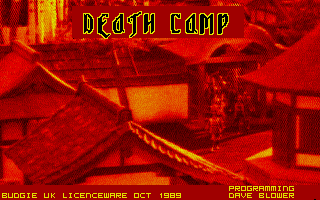
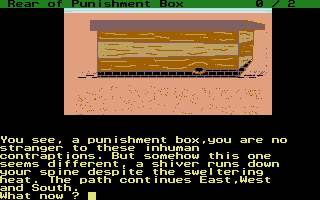
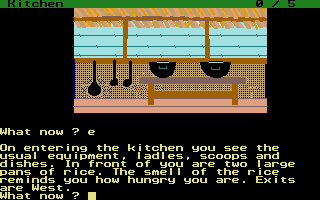
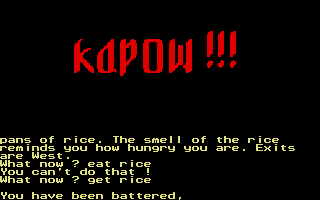
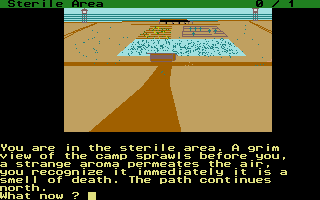
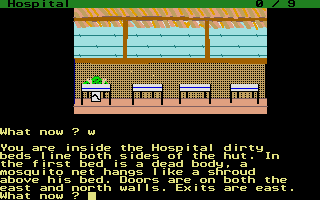
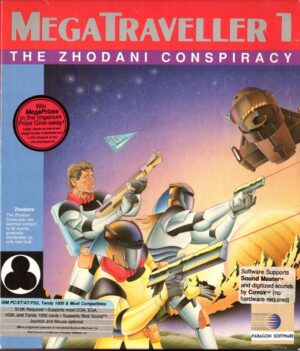


Reviews
There are no reviews yet.